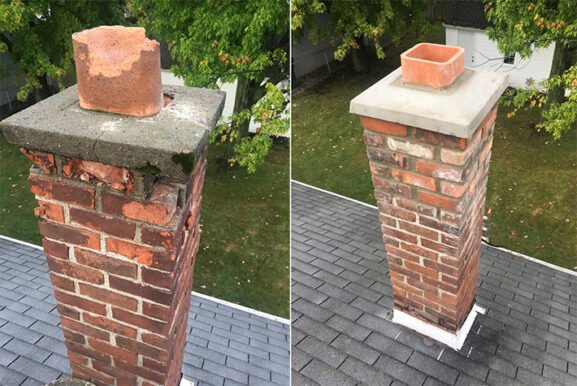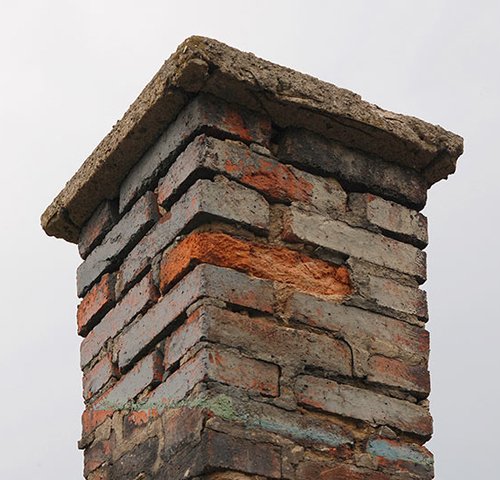Why Chimney Damper Repair Should Be a Top Priority for Homeowners This Season
Key Takeaways
- A faulty chimney damper can lead to energy loss, increased utility bills, and indoor discomfort
- Timely damper repair helps prevent smoke backflow and indoor air quality issues
- Knowing the signs of a damaged damper allows for quick action before further chimney damage occurs
- Professional repair ensures safety, efficiency, and longer chimney lifespan
Understanding the Role of a Chimney Damper
A chimney damper is a key component of your fireplace system. It regulates airflow and acts as a seal between the fireplace and the outside environment. When closed, it keeps warm air inside your home. When open, it allows smoke and combustion gases to escape through the flue during a fire.
Without a functioning damper, you risk heat loss during winter and cooled air escaping in summer. You also face increased exposure to smoke, carbon monoxide, and moisture. That’s why maintaining your damper in good condition is essential—not just for comfort, but for your safety and utility efficiency.
Common Signs That Your Chimney Damper Needs Repair
Many homeowners aren’t aware their damper is failing until issues become more severe. Some warning signs include:
- Difficulty opening or closing the damper
- Cold drafts in the fireplace when it’s not in use
- Persistent smoky odors even when the fireplace is off
- Visible rust or corrosion on the damper mechanism
- An unusual amount of soot buildup
These symptoms are easy to ignore, but they often point to a damper that’s warped, stuck, or improperly sealed. Left unaddressed, these issues can cause both safety hazards and financial losses over time.
What Causes Chimney Damper Damage
Chimney dampers are constantly exposed to high heat, moisture, and soot. These conditions make them prone to wear and corrosion. Here are some common causes of damper failure:
- Creosote Buildup: A byproduct of burning wood, creosote can harden and restrict the movement of the damper
- Rust and Moisture Damage: Chimneys without a cap allow water to enter, which leads to rust over time
- Age and Wear: Traditional cast-iron throat dampers lose their efficiency with repeated use and seasonal temperature changes
- Poor Installation: If the damper was not properly fitted during construction or replacement, it may not form a proper seal
Modern chimney systems often use top-sealing dampers which are more resistant to these issues. Still, even these need occasional inspection and maintenance.
The Risks of Delaying Chimney Damper Repair
Ignoring a damaged damper can affect your home’s air quality, safety, and energy performance. A malfunctioning damper allows cold air to rush in during winter, making your heating system work harder. In summer, it allows cool air to escape, leading to rising utility costs.
More importantly, a faulty damper may allow carbon monoxide or smoke to leak back into your living space. Prolonged exposure to these fumes poses serious health risks. The U.S. Environmental Protection Agency warns about carbon monoxide as a leading cause of accidental poisoning in homes (EPA CO Guide).
Moisture intrusion is another concern. When a damper doesn’t close fully, rainwater can drip down the flue and damage the firebox, liner, or even your interior walls. This kind of water damage often results in costly chimney repairs that go well beyond the damper.
Repair Options Depending on the Damper Type
There are generally two types of chimney dampers in residential homes:
- Throat Dampers: Located just above the firebox
- Top-Sealing Dampers: Positioned at the top of the chimney flue and sealed with a spring-loaded cap
Repair strategies vary depending on the damper design and the type of damage. For throat dampers, rust and warped metal are common issues. In most cases, cleaning, realignment, or replacement of the metal plate may be necessary. For top-sealing dampers, cable damage or seal failure might call for replacement of the gasket or reattaching the spring mechanism.
If the damper is beyond repair, replacing it with a modern, energy-efficient top-sealing damper is often a smart investment. These versions provide a tighter seal and offer the added benefit of keeping rain, animals, and debris out of the chimney.
Why Professional Inspection and Repair Are Worth It
Although some minor damper issues can be temporarily managed with DIY adjustments, professional chimney technicians bring expertise and tools that ensure long-term results. They can thoroughly inspect the damper assembly, chimney flue, and surrounding masonry to identify the root of the problem.
In many cases, what appears to be a damper issue may stem from a misaligned flue liner, hidden rust damage, or even structural shifting. A qualified chimney specialist can assess these problems holistically and recommend a repair plan that prevents future complications.
Hiring certified professionals also ensures compliance with local building codes and fire safety guidelines. This matters especially if you plan to rent or sell your property.
How Often Should You Inspect or Repair the Damper
Routine chimney maintenance is key to spotting problems early. Industry guidelines recommend a full chimney inspection at least once a year, ideally before the heating season begins.
This annual checkup should include a damper functionality test, especially if you use the fireplace regularly. Even if you don’t light fires often, external factors like weather, pest intrusion, and debris buildup can still affect the damper’s performance.
If any issues are found, prompt repair is the best course of action. Waiting until the next winter or skipping service altogether can increase both risks and repair costs.
Taking Action for Better Efficiency and Comfort
Staying on top of chimney damper repair is one of the simplest and most effective ways to protect your home. It improves heating efficiency, prevents indoor air pollution, and reduces long-term maintenance costs. By addressing damper problems early, you extend the life of your fireplace and make your home more comfortable year-round.
Chimney dampers may be out of sight, but they shouldn’t be out of mind. Don’t wait until the first cold snap or smoky room to act—schedule a chimney inspection and tackle damper issues before they lead to bigger problems.

